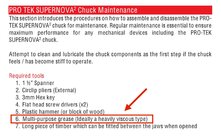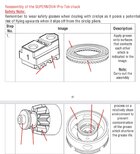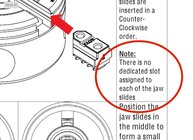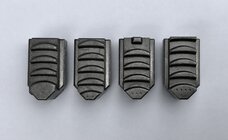Well, a couple of weeks back, I had a mishap with a can of stain. I reached for something else, the can of stain was there, caught my hand, and tipped over. Not entirely, but enough that a decent blop of stain poured out and onto...my workbench, a bunch of tools, as well as one of my chucks and a couple sets of jaws that were sitting there. Needless to say, the chuck aint chucking right now. 
I generally keep my chucks pretty clean, blow them out after each use. My main chuck is a sealed Record Power, which seems to need only that, to be blown off each use. I have a couple of Nova G3 chucks, however, that seem to gather gunk inside of them. In the past, I disassembled them to clean them out....however REASSEMLBING is an unholy PITA. So I am wondering...is it possible to clean a chuck without disassembling them? Its all just metal...and I've never lubricated them in any way. So, I figure, with the right solvent, maybe I could just immerse them and let the solvent do the work, then drain them and...clean them out. Not real sure what the best solvent to use would be though. I know I get a decent amount of dust packed underneath the slides in the nova chucks. Taking them apart in the past, was a way to really scrub that spiral thread on the base. Is there any solvent that would take care of that dust deeper in, without the need for disassembly? And, to boot, dissolve this stain that ended up getting in there too?
Thanks!
I generally keep my chucks pretty clean, blow them out after each use. My main chuck is a sealed Record Power, which seems to need only that, to be blown off each use. I have a couple of Nova G3 chucks, however, that seem to gather gunk inside of them. In the past, I disassembled them to clean them out....however REASSEMLBING is an unholy PITA. So I am wondering...is it possible to clean a chuck without disassembling them? Its all just metal...and I've never lubricated them in any way. So, I figure, with the right solvent, maybe I could just immerse them and let the solvent do the work, then drain them and...clean them out. Not real sure what the best solvent to use would be though. I know I get a decent amount of dust packed underneath the slides in the nova chucks. Taking them apart in the past, was a way to really scrub that spiral thread on the base. Is there any solvent that would take care of that dust deeper in, without the need for disassembly? And, to boot, dissolve this stain that ended up getting in there too?
Thanks!





